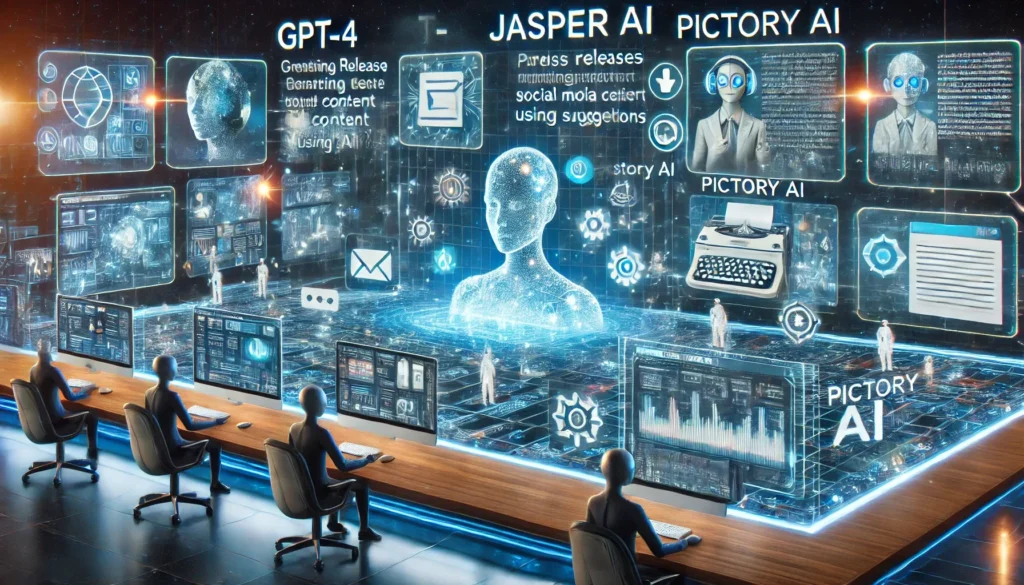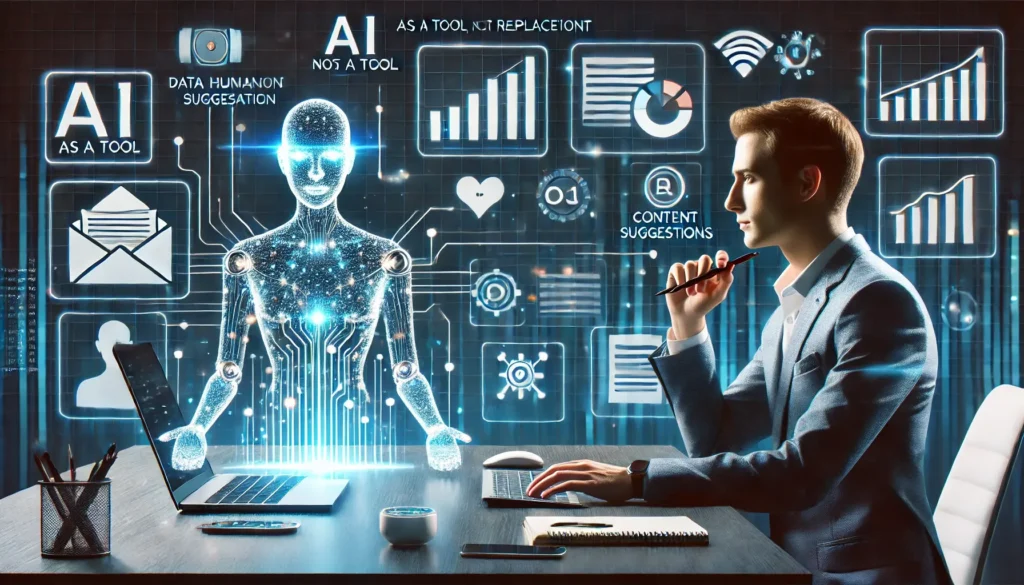In the ever-evolving world of public relations (PR) and media, technology has always played a pivotal role in shaping industry standards. But in recent years, no innovation has sparked more conversation than the rise of artificial intelligence (AI). Leonardo Lombardo, a seasoned spokesperson in publicity, public relations, and promotion, shares his insights on how AI is transforming the way campaigns, advertisements, and media content are created and what this shift means for the future of PR professionals.
The Increasing Role of AI in Public Relations
AI is becoming an indispensable tool in public relations, enabling agencies to deliver faster and more cost-effective solutions to their clients. Lombardo, who has spent decades in the industry, emphasizes that AI engines such as OpenAI’s GPT-4, Google’s Bard, and Jasper AI are revolutionizing content creation. “These tools are no longer just experimental technologies,” says Lombardo, “they’re now being integrated into everyday PR tasks, from drafting press releases to designing entire ad campaigns.”
AI’s application is vast, spanning across various types of media operations, including social media strategy, video production, and even automated customer service interactions. But while the use of AI has obvious benefits in terms of efficiency, Lombardo is cautious about how it might affect the overall quality and authenticity of PR content.
Leonardo Lombardo on the Role of AI in Public Relations is an original (BetterNutritionNews) article.
Benefits of AI in PR: Speed, Efficiency, and Cost Reduction
One of the most significant advantages of AI in PR is the speed with which content can now be generated. AI can produce vast amounts of content in a fraction of the time it would take a human team. Lombardo explains, “Time-sensitive campaigns that would typically require a week’s worth of work can now be completed in days or even hours with AI. This allows agencies to react more quickly to news and trends, which is critical in today’s fast-paced media environment.”
Another key benefit is cost reduction. PR agencies can produce high-quality content without needing to hire large teams of writers, designers, or videographers. Lombardo notes, “For smaller agencies, AI can be a game-changer. It allows them to compete with bigger firms by reducing overhead costs and delivering results faster.”
Some AI engines currently in use that help PR agencies streamline their operations include:
– GPT-4 by OpenAI: Used for drafting content like press releases, blogs, and social media posts.
– Jasper AI: Known for its robust AI-powered marketing copywriting capabilities.
– Synthesia: A tool that uses AI to create professional video content from plain text, making it a popular choice for video advertisements and presentations.
– Pictory AI: Another video-based AI that helps PR teams create compelling visual stories from raw footage or stock images.

AI and Content Quality: The Pros and Cons
While the speed and cost-effectiveness of AI are undeniable, there are concerns about how AI-generated content measures up in terms of quality. “There’s no denying that AI can produce grammatically sound and informative content,” says Lombardo, “but the real question is whether it can deliver the emotional nuance and creativity that human writers bring to the table.”
Lombardo points out that while AI can be trained to generate content based on past data, it lacks the ability to fully understand human emotions and cultural context. This limitation can lead to campaigns that feel generic or out of touch with specific audiences. “AI can analyze trends and churn out copy, but it can’t replicate the human touch that resonates on a deeper level with readers,” Lombardo remarks.
Another potential downside is that AI-generated content can sometimes lack originality. Since AI draws from pre-existing data to create new content, there’s a risk of producing material that is repetitive or unoriginal. This could be particularly problematic for PR agencies that pride themselves on offering fresh, creative solutions for their clients.
“AI is a tool, not a replacement for human creativity,” Lombardo stresses. “The best results come from a hybrid approach where human ingenuity is combined with AI efficiency. This ensures that the content is not only timely and cost-effective but also engaging and authentic.”
Economic Impact on PR Agencies and Clients
From an economic standpoint, the use of AI in PR is both a boon and a potential disruptor. For clients, AI-driven PR services can be much more affordable than traditional methods. Lombardo observes, “Smaller companies and startups now have access to high-quality PR services at a fraction of the price. AI is leveling the playing field in terms of who can afford top-tier publicity.”
However, this economic benefit comes with a downside for PR professionals, especially those who specialize in content creation, such as writers, videographers, and designers. As AI continues to automate these tasks, many in the industry fear job displacement. Leonardo Lombardo acknowledges these concerns but remains optimistic about the future.
“AI will certainly change the landscape of PR jobs,” he says. “But I don’t think it will eliminate them. Instead, it will push professionals to focus on what AI can’t do—creativity, strategy, and relationship building. The future of PR isn’t about fighting AI; it’s about learning how to work alongside it.”
The Future Outlook for PR Careers in the Age of AI
The rise of AI in PR raises questions about the future of careers for PR professionals. Lombardo believes that while some roles may evolve, the core skills of PR—communication, strategy, and relationship management—will always be in demand. “AI can handle the grunt work of content creation, but it can’t build relationships with clients or manage a brand’s reputation during a crisis. Those skills will always require a human touch,” he asserts.
For writers, bloggers, and other content creators, the key to thriving in an AI-driven landscape will be adaptability. “AI will force us to up our game,” Lombardo says. “Writers and videographers who can incorporate AI tools into their workflow without losing their creative edge will be the ones who succeed.”
Lombardo also believes that AI will create new opportunities in PR. As AI becomes more advanced, there will be a growing need for professionals who can manage and fine-tune these systems. “The future of PR isn’t just about content creation. It’s also about understanding and managing the technology behind it. Those who can do both will be highly sought after.”

Ethical Considerations and AI Regulation
Another important aspect of AI’s integration into PR is the ethical considerations it raises. Lombardo is a firm advocate for transparency when using AI-generated content. “Clients and consumers have the right to know whether they’re interacting with a human or a machine,” he says. “Transparency builds trust, and that’s essential in PR.”
There is also the question of if and how AI should be regulated within the industry. As AI becomes more prevalent, some worry that it could lead to a flood of low-quality, automated content that clutters the media landscape. Lombardo believes that industry standards need to be established to ensure that AI is used responsibly.
“AI is a powerful tool, but it needs to be used ethically,” Lombardo insists. “PR agencies should implement guidelines that ensure AI-generated content meets the same standards of quality and authenticity as human-created content.”
Conclusion: AI as a Tool, Not a Replacement
As AI continues to reshape the PR industry, Lombardo remains confident that it will ultimately enhance, not replace, the role of human professionals. “AI is here to stay, and that’s a good thing,” he says. “It allows us to work faster and smarter, but it will never replace the creativity and emotional intelligence that humans bring to the table.”
For PR agencies and clients alike, the challenge moving forward will be finding the right balance between leveraging AI’s capabilities and preserving the human touch that makes PR so impactful. As Lombardo aptly puts it, “AI is a tool, not a substitute for human insight. The future of PR lies in collaboration between man and machine.”
In this brave new world of AI-powered or AI-enhanced public relations, it’s clear that the role of the PR professional is far from obsolete. Instead, it’s evolving—just as it always has.

